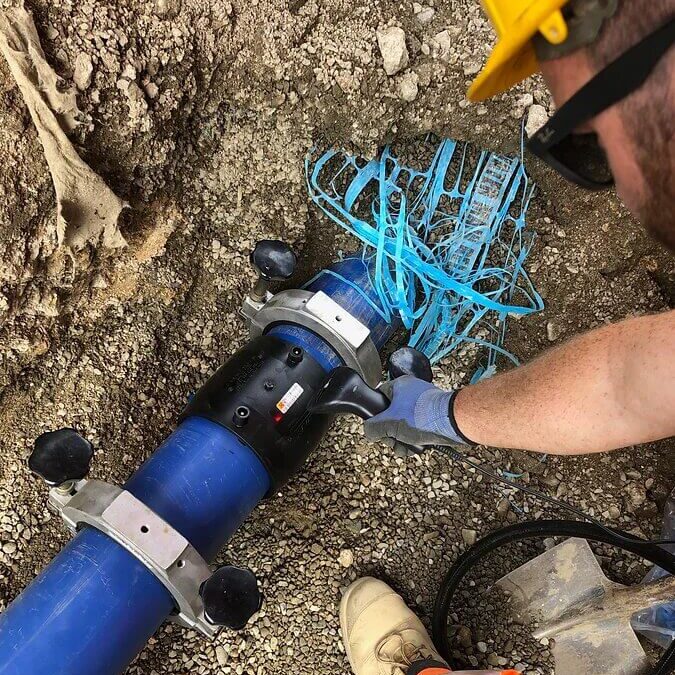Hydrostatic pressure testing is a crucial method used across various industries to ensure the integrity and safety of pressure vessels, pipelines, and other equipment that are designed to contain fluids or gases under pressure. This non-destructive testing technique helps identify potential weaknesses or defects in these systems by subjecting them to elevated pressures. In this blog, we will delve into the world of hydrostatic pressure testing, exploring its benefits, the testing process, and its wide-ranging applications.
What is Hydrostatic Pressure Testing?
Hydrostatic pressure testing, often simply referred to as hydrotesting, is a widely accepted and trusted method for verifying the structural integrity and safety of various pressure-containing components. These components can include but are not limited to:
- Pipelines: Used for transporting fluids, such as oil, gas, water, and chemicals over long distances.
- Pressure Vessels: Containers designed to hold gases or liquids at a pressure substantially different from the ambient pressure.
- Boilers: Devices used to generate steam for power generation or heating.
- Storage Tanks: Containers used for storing liquids or gases under pressure, commonly found in industries like petrochemicals.
The primary objective of hydrostatic pressure testing is to ensure that these components can withstand their intended operating pressures without experiencing leaks, ruptures, or structural failures.
The Benefits of Hydrostatic Pressure Testing
Hydrostatic pressure testing offers several key benefits, making it an essential quality control and safety assurance measure in various industries:
1. Detection of Weaknesses and Defects
One of the primary advantages of hydrotesting is its ability to identify weaknesses, defects, and potential flaws in pressure vessels, pipelines, and other equipment. These issues can include weld defects, material imperfections, corrosion, and manufacturing errors. By subjecting the equipment to elevated pressures, any existing flaws become apparent, allowing for timely repairs or replacements.
2. Ensures Safety
Safety is paramount when dealing with pressurized systems, especially in industries like oil and gas, where a failure can lead to catastrophic consequences. Hydrostatic pressure testing helps ensure that the equipment can operate safely within its specified pressure limits, reducing the risk of accidents, leaks, or environmental damage.
3. Compliance with Standards and Regulations
Many industries are subject to stringent regulations and codes that mandate periodic testing and inspection of pressure equipment. Hydrostatic pressure testing helps organizations comply with these standards, ensuring that their equipment meets the required safety and quality criteria.
4. Prevents Downtime and Costly Repairs
Identifying and addressing equipment weaknesses during hydrotesting can prevent unexpected failures during operation. This proactive approach reduces downtime and avoids costly repairs or replacements that may be necessary if a failure were to occur in the field.
5. Quality Assurance
Hydrostatic pressure testing is an integral part of the quality control process during the manufacturing of pressure equipment. Manufacturers use it to verify that newly fabricated components meet design specifications and safety standards before they are put into service.
The Hydrostatic Pressure Testing Process
The hydrostatic pressure testing process involves a series of well-defined steps to ensure the safe and accurate assessment of pressure equipment. Here’s an overview of the typical procedure:
1. Pre-Test Inspection
Before the actual test, a thorough inspection of the equipment is conducted. This includes checking for visible defects, ensuring that all necessary connections and fittings are in place, and confirming that the test medium (usually water) is compatible with the equipment and won’t cause corrosion or other issues.
2. Test Medium Preparation
Water is the most commonly used test medium due to its incompressible nature and availability. However, in some cases, other liquids or gases may be used based on specific requirements. The test medium is carefully prepared, ensuring it is clean and free from contaminants that could damage the equipment.
3. Filling and Pressurizing
The equipment is gradually filled with the test medium, usually water, while venting any trapped air to prevent air pockets. The pressure is increased gradually and consistently to the specified test pressure, which is typically higher than the equipment’s maximum operating pressure.
4. Holding and Monitoring
Once the equipment reaches the test pressure, it is held at that pressure for a specified duration, typically between 10 minutes to several hours, depending on the industry standards and the size of the equipment. During this period, the equipment is closely monitored for any signs of leakage or structural deformation.
5. Inspection and Evaluation
Trained inspectors carefully examine the equipment for any signs of leakage, bulging, or deformation. They may use various methods such as visual inspection, ultrasonic testing, or dye penetrant testing to detect defects. If any issues are identified, the equipment may be depressurized, and necessary repairs or modifications are made.
6. Depressurization and Draining
After a successful test, the pressure is gradually released from the equipment, and the test medium is drained. Proper depressurization is essential to avoid any sudden release of pressure, which can be dangerous.
7. Reporting and Documentation
A detailed report of the hydrostatic pressure test is generated, including all relevant information such as test pressure, duration, temperature, and results of inspections. This documentation is crucial for compliance with regulations and for future reference.
Applications of Hydrostatic Pressure Testing
Hydrostatic pressure testing finds extensive applications in various industries, ensuring the safety and reliability of critical equipment. Here are some of the key sectors where hydrotesting is commonly employed:
1. Oil and Gas Industry
In the oil and gas sector, pipelines are used to transport vast quantities of crude oil, natural gas, and other hydrocarbons over long distances. Ensuring the integrity of these pipelines is paramount, as any failure can result in environmental disasters and significant financial losses. Hydrostatic pressure testing is routinely conducted on pipelines during construction and maintenance to identify and address any potential issues.
2. Petrochemical Industry
Pressure vessels, storage tanks, and reactors are essential components in petrochemical plants. These vessels contain hazardous chemicals and gases under high pressures and temperatures. Hydrostatic pressure testing is conducted during manufacturing and as part of regular maintenance to verify the integrity of these critical assets.
3. Aerospace Industry
Aircraft components, such as hydraulic systems and fuel tanks, are subjected to hydrostatic pressure testing to ensure they can withstand the extreme conditions encountered during flight. This testing helps prevent mid-air failures and accidents, enhancing passenger safety.
4. Power Generation
Boilers and steam generators used in power plants are subjected to hydrotesting to verify their structural integrity and ability to withstand high-pressure steam. This is crucial for the safe and efficient generation of electricity.
5. Construction Industry
In the construction industry, water and sewer pipes that run under buildings and roads are often pressure tested to check for leaks or weaknesses before they are put into service. This helps prevent costly repairs and disruptions once the infrastructure is in use.
6. Automotive Industry
Automotive manufacturers use hydrostatic pressure testing to evaluate the fuel and brake systems of vehicles. This ensures that these systems can handle the pressures and temperatures they are exposed to during normal operation.
7. Maritime Industry
In the maritime sector, pressure vessels like boilers on ships are subject to hydrotesting to ensure the safety and reliability of marine vessels. This is essential for the safety of crew members and the success of maritime operations.
Challenges and Considerations
While hydrostatic pressure testing offers numerous benefits, it also comes with its share of challenges and considerations that need to be addressed:
1. Environmental Impact
Using water as a test medium can raise environmental concerns, especially in regions facing water scarcity. Proper disposal or recycling of the test medium is essential to mitigate the environmental impact.
2. Safety Precautions
Hydrostatic pressure testing involves high-pressure systems that can be hazardous if not managed properly. Strict safety protocols must be followed, and qualified personnel should conduct the tests to prevent accidents.
3. Cost
Hydrotesting can be costly due to the equipment and labor required for the process. However, the costs associated with a failure in the field can far outweigh the expenses of testing.
4. Test Medium Compatibility
Selecting the appropriate test medium is critical, as using an incompatible medium can lead to corrosion or other issues in the equipment.
5. Test Duration
The duration of the test can vary depending on the size and type of equipment being tested. Longer tests can impact project timelines and may require additional resources.
Conclusion
Hydrostatic pressure testing is a vital quality control and safety assurance technique used across a wide range of industries. It helps ensure the structural integrity and reliability of pressure vessels, pipelines, and other critical equipment. By detecting weaknesses and defects before they become catastrophic failures, hydrotesting plays a crucial role in preventing accidents, protecting the environment, and maintaining the safety of workers and the public.
As technology continues to advance, the methods and equipment used in hydrostatic pressure testing are also evolving, allowing for more accurate and efficient testing processes. Whether in the oil and gas industry, aerospace, petrochemicals, or any other sector that relies on pressure equipment, hydrostatic pressure testing remains an indispensable tool for ensuring the safety and reliability of critical infrastructure.


Recent Comments